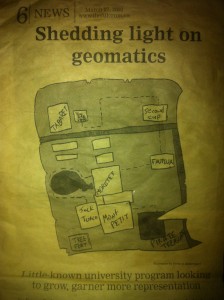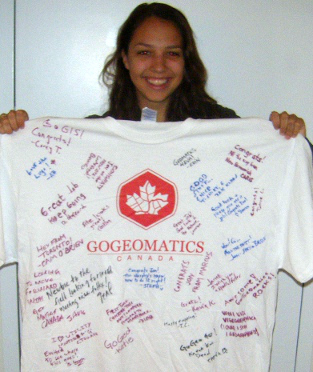September 25, 2012
Growing up, my life ambitions changed almost daily, not unlike most young children. Nearing the end of high school, the realization of having to figure out ‘what’s next’ was starting to set in. I knew I wanted to attend university, but where and for what were the pressing questions. Almost at random, I chose GIS, knowing only that it was part of the geography department. I was walking into the unknown, and hoped I would be as intrigued with my studies as I was with the program description. I took the second year Introduction to GIS course in first-year, hoping that I would get a positive vibe from the course. Luckily, I became enamored with GIS, and soon had taken every course related to it that my university offered. Once finished, I had an undergraduate degree, but quickly noticed my lack of technical skills. Therefore, I started a postgraduate program in GIS in September, and this is where my story starts.
I have completed three weeks of my full year program to date. To my surprise, we are starting as far back as learning how to open ArcGIS. Since I have already completed multiple courses that utilize some form of a GIS, I thought this peculiar and assumed that others had as well. However, I was very wrong. I’ve come to the realization that my peers are from a variety of both academic and work backgrounds. Some focused their undergrad on biology. Others have learnt how to use GIS to their benefit through companies they’ve worked for. I anticipate this dynamic being useful during group work – hopefully in my group!
Our program has taught me another lesson besides appreciating a team with a multitude of backgrounds and experiences. General computer knowledge will not get you anywhere. Both myself and my peers have already had countless technical difficulties, from having our IPs blacklisted from the school’s wireless internet, to lack of consistency in technology due to an unset level of standard for tech requirements from student to student and student to professor. Installing multiple programs and prepping students personal computers to have a consistent working space is a lot more difficult than one would think, and has been proving to be a time-consuming and hair-pulling task.
I am all for going back to basics, and building your knowledge from the ground up with a solid foundation first. Therefore, I am trying to use this time to delve into my costly textbooks. I did save over $100 by purchasing my books online compared to the schools bookstore, and received them within two days – highly recommend checking it out! Looking forward, I have five assignments and a midterm this week, and the workload does not appear to deviate until mid-December. Yes, at Christmas break. So for tonight I will enjoy the time I have to breathe and make a lunch for tomorrow, before the all too inevitable grab an apple and go.






Be the first to comment